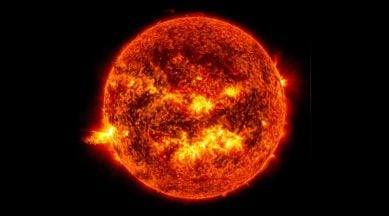NASA spacecraft completes 16th close approach to Sun, appears unharmed
NASA's Parker Solar Probe just completed its 16th close approach to the Sun and appears to be relatively unharmed. It is now preparing to get even closer to the Sun.

NASA’s Parker Solar Probe completed its 16th orbit around the Sun, which included a close approach to the Sun on June 22, 2023, said the space agency. During the close approach, Parker came within 8.5 million kilometres of the Sun’s surface while moving at around 586,782 kilometres per hour. The spacecraft seemed to be operating normally without any issues after completing the close flyby.
Parker is touted as humanity’s first ever mission that “visited” a star. The spacecraft is about the size of a small car and can travel directly through the Sun’s atmosphere. It was launched from Cape Canaveral in Florida on August 12, 2018.
monthly limit of free stories.
with an Express account.
The spacecraft and its instruments are protected from the heat of the Sun by a 4.5-inch thick carbon composite shield that can withstand temperatures of around 1,777 degrees Celsius. Parker’s primary science goals including tracing how energy and heat move through the corona and to explore what causes the acceleration of solar winds and solar energetic particles.
It carries four instrument suites that are designed to study magnetic fields, plasma and energetic particles and image the solar wind.
Later, on August 21, 2023, the probe is set to go past Venus for its sixt fly-by of the planet. The Johns Hopkins Applied Physics laboratory (APL) made the probe go through a small trajectory correction manoeuvres on June 27 to make this flyby go smooth. That was the first correction manoeuvre by the spacecraft since March 2022.
The spacecraft uses Venus’s gravity to tighten its orbit around the Sun. It is now preparing to get within around 7.2 million kilometres of the star’s surface.